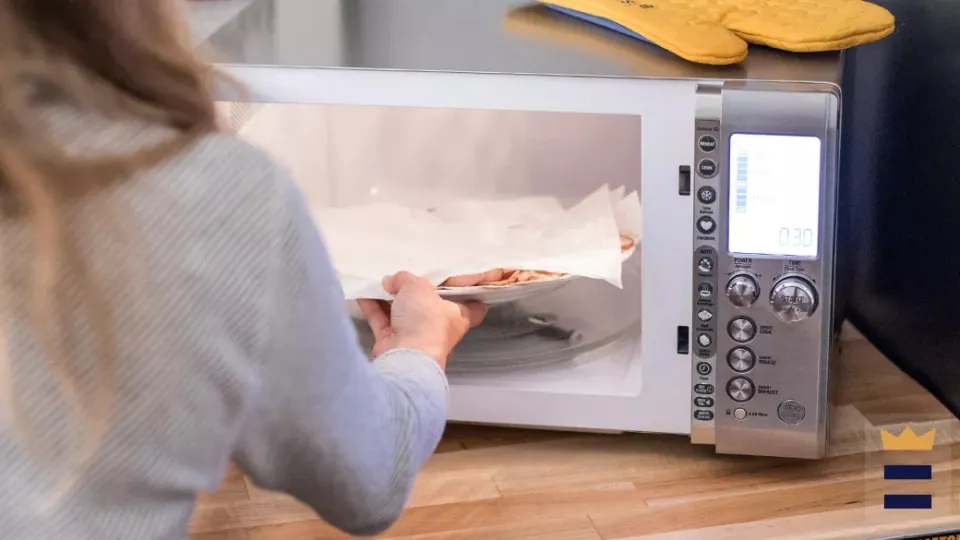Low humidity in your home can worsen allergies, cause dry skin, cause static electricity, and make you more susceptible to colds and the flu during the winter. Find ways to humidify a room without a humidifier.
You are supposed to get more plants, put vases in sunny places, cook on the stovetop, leave door open when showering, shower or bathe with the door open, put your tub or shower water to work, turn vents or radiators into humidifiers…
Ways to Humidify a Room (Without a Humidifier)
Here are the details:
Get More Plants
A houseplant certainly beautifies the space, but through the process of transpiration, they can also add moisture to the air. Once a plant is watered, moisture will travel through the roots up to the leaves, according to the USGS. From there, it is released through leaf pores, raising the indoor humidity level.
Any type of plant will do, but spider plants and jade plants are among the best for increasing indoor humidity, according to a December 2016 paper in HortTechnology, a journal from the AHS, the American Society for Horticultural Science
Put Vases in Sunny Places
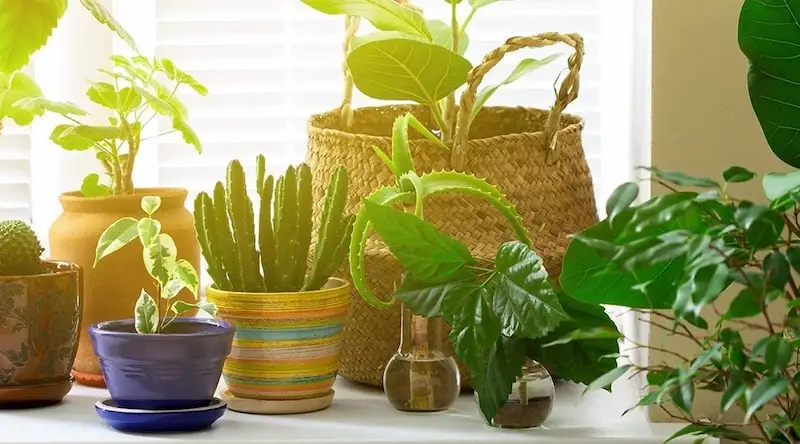
Vases with water inside should be placed on sunny window sills. The water will gradually evaporate in the sun, adding moisture to the air.
Cook on the Stovetop
A great way to raise a room’s humidity is to cook on the stove, as you may not know. This is especially true when boiling foods like pasta, potatoes, or rice. Some of the water will evaporate into the air as it boils, turning into a vapor that will easily mix with the air in your home.
Leave the Door Open When Showering
It’s simple to increase the humidity in the air around you when you’re taking a nice, steamy shower by leaving the door open. Don’t drain the tub when you get out if baths are more your style. Instead, give the water some time to cool down first so that you can benefit from the lingering heat and increase the air’s humidity.
Shower Or Bathe With the Door Open
Who doesn’t enjoy the hot, steamy sensation of a shower?
By leaving the bathroom door slightly ajar, you can now improve your pampering sessions by increasing the humidity in other rooms of your home by allowing the steam to escape from the bathroom and enter them.
Bonus points if you include an enticing aromatherapy shower steamer; humidifying your home has never been so amazing!
Put Your Tub Or Shower Water to Work
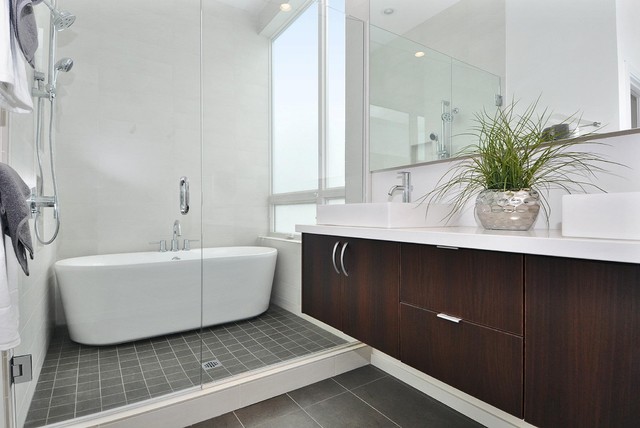
Evaporation is when water changes from a liquid to a gas, where it adds moisture to the air, according to the U.S. Geological Survey (You should therefore begin with a room in your home that sees a lot of water: the bathroom.
Instead of draining the tub immediately after taking a bath, leave the water in there to cool. The moisture has time to evaporate into the air because of this.
In a similar vein, after a hot shower, open the bathroom door to let the steam naturally humidify adjacent spaces.
Turn Vents Or Radiators into Humidifiers
In order to add a little moisture to a space and essentially make a makeshift humidifier, you can use the very source of that warm, dry heat.
Put a pot or bowl of water close to your heat source, perhaps on a radiator or close to a vent. The water will evaporate into the air as it warms up, adding moisture to the atmosphere.
Decorate With Vases Or Fountains
Select a calm appearance! On sunny windowsills, place some vases filled with colored marbles or stones and water. Alternatively, unwind while listening to the room’s running fountain.
You can create a natural humidifier alternative by increasing the amount of water in your room. This will encourage evaporation.
Air-Dry Your Laundry
Instead of using a dryer, hang your clothes and towels over the backs of chairs to dry naturally. As the wet clothes dry, water will be released back into the atmosphere.
Plus: Using this technique will lower your electric bill in addition to humidifying your home.
Place Bowls of Water on Registers
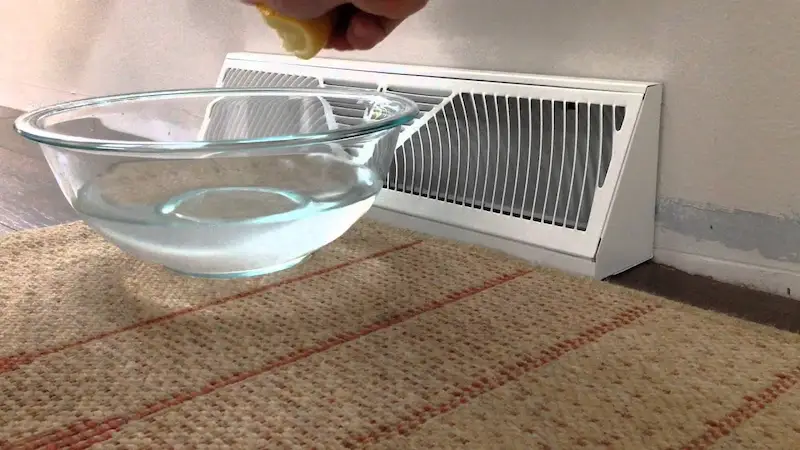
The effectiveness of this humidity-increasing advice is probably the highest. To introduce humidity into the air, place water-filled metal or ceramic bowls on radiators or heat registers. The amount of water released during the cold months when the furnace is operating at full capacity might surprise you.
Boil More Water
similar to the aforementioned, but without having to put in the effort of cooking anything! One of the quickest and simplest methods to add moisture to a space is to boil a container of ordinary water. Simply take a pot or pan, add a good amount of water, turn on the stove, and wait for it to boil! Add a few drops of essential oils to the air to make it even more calming and effective, such as lavender for relaxation or eucalyptus to help clear airways.
Wet Sponges
- Take a sponge and give it a good soak in a bowl of water
- Give the sponge a gentle squeeze to remove most of the excess water
- Place the damp sponge into a plastic bag – a zip seal food bag would be ideal, but you could also use one from a supermarket
- Puncture the bag with plenty of holes and place it in the room you would like to humidify
Dry Clothes on Racks
Instead of putting your clothes in the dryer, let them air dry on a rack. While it takes a little longer, drying your clothes is an efficient way to increase the humidity in your home.
Create Your Own Fan Dehumidifier
You’re going to need:
- Drinking glass
- Long skewer
- Sponge
- Water
- A small fan
When you lower the sponge into the glass after inserting the skewer through it, it should be held in place by the skewer.
The sponge’s lower portion should be completely submerged in the glass of water.
Turn on a low-speed fan and position it behind the setup so that the airflow is directed toward the room’s center, allowing the water vapor to circulate throughout the space.
Water and electricity can be deadly together, so take care not to place the water too close to the fan or anywhere it could be knocked over.
Place Water Bowls Around the House
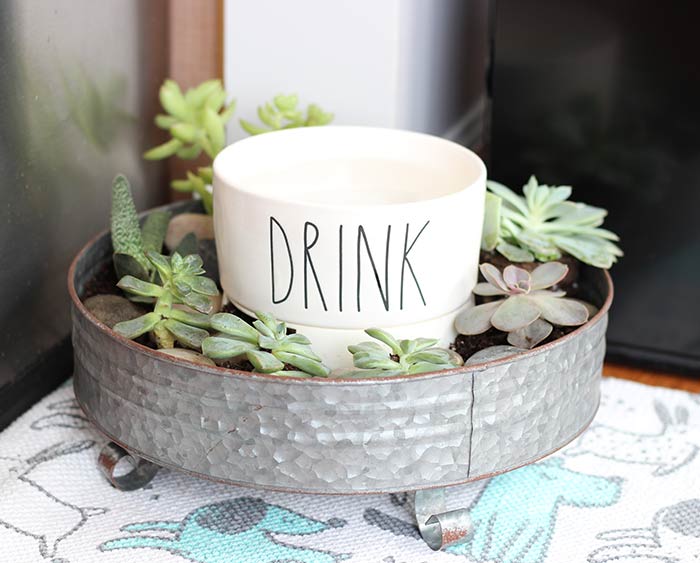
Why not use the power of the sun instead, if you don’t want to leave pots and pans of water simmering in your kitchen?
Grab a few bowls of water and set them on the windowsills on warm, sunny days while keeping the curtains open. Bowls of water will gradually warm as they naturally evaporate liquid into the air.
Put Damp Towels on Heat Vents
The humidity of a room can be raised quickly and effectively by placing a damp towel over a heat vent. However, it’s never a good idea to drape wet towels over an electric heater because it increases the risk of a fire.
The humidity in a room can also be increased by covering a ceiling fan’s blades with small damp towels, but always make sure the ceiling fan is turned off.
Use a Spray Bottle
The more fine the mist that is sprayed, the better, so think about making the investment.
Fill the bottle with water, and at various times during the day, spritz a little bit of it into each room of your home. Avoid overspraying as it may cause furniture, carpets, or bedding to become soggy.
Use the Dishwasher
An additional fantastic humidifier substitute is your time-saving dishwasher.
What you should do is steam-dry your dishes, and when the cycle is finished, open the door to let some moisture in.
How to Measure Humidity?
Here are ways to measure humidity:
Hygrometers
Using a hygrometer, a tool that measures both the temperature and moisture in the air, is by far the simplest way to determine the level of humidity in your home. Hygrometers come in a variety of forms, but they all operate in a very similar way.
Mechanical Hygrometers
These measure the air’s moisture content using hair or string. The hair will expand when it comes into contact with water vapor and this expansion is used to calculate the humidity
Digital Hygrometers
These are typically more accurate than mechanical hygrometers because they measure the amount of moisture in the air using sensors.
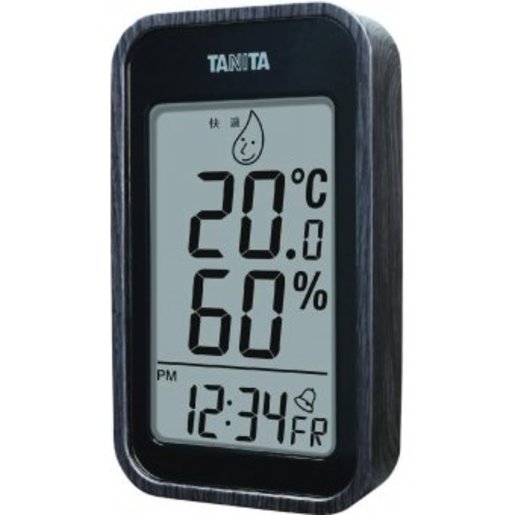
The Ice Cube Method
The ice cube method is straightforward and manual, and it will provide you with a general idea of the levels of humidity in your home. Two or three ice cubes and a glass of water are all you’ll need.
Wait a few minutes after adding the ice cubes to the water glass. Check the glass after approximately four minutes. It’s possible that the humidity level in the space is too high if condensation is forming on the glass or drips are coming off the glass’s exterior. However, they might be too low if there is no condensation at all.
Wet and Dry Bulb Thermometers Method
Two glass thermometers are all that are required for this method, which will provide you with a slightly more precise measurement of the humidity levels.
This is your dry bulb, so leave one of the thermometers exactly as it is.
This is your wet bulb; to create it, wrap a piece of moistened cotton wool around the base of the second thermometer and fasten it with a rubber band. Make sure the water you use to wet the cotton wool is at room temperature.
For 5 to 6 minutes, place both thermometers side by side on a piece of cardboard. After that, take the temperature readings from both thermometers, then calculate the depression value by dividing the wet bulb temperature by the dry bulb temperature.
FAQs
Can a Bowl of Water Humidify a Room?
Without having to spend a dime, you can increase your home’s humidity by placing a metal or ceramic bowl of water on top of your floor registers or radiant heating unit. In humid air, the water will evaporate. Place a water-filled bowl or vase on your windowsills on a sunny day.
How Do You Know If the Air is Dry?
Signs The Air In Your House Is Too Dry
- It may be difficult to breathe or sleep at night if your sinuses and nose are inflamed. Dry indoor air may be to blame if you suddenly wake up coughing in the middle of the night.
- Flare-ups of asthma and allergies. …
- an increase in static electricity …
- damage to the wood in your house.
Does Sitting Water Increase Humidity?
If you ever take a bath, keep the water running after you’re done. Letting it sit and cool completely allows more moisture to evaporate into the air than when you’re showering.
Conclusion: Humidify a Room
You and your family will stay healthier and more at ease in your home if the humidity is kept at an ideal level.
There is typically no need to purchase an expensive home humidifier because there are so many activities and tasks we carry out every day that will naturally raise the humidity levels in our homes. Typically, using the tools and resources we already have is sufficient to evaporatively produce sizable amounts of water vapor.
Read about How to Use a Humidifier?



